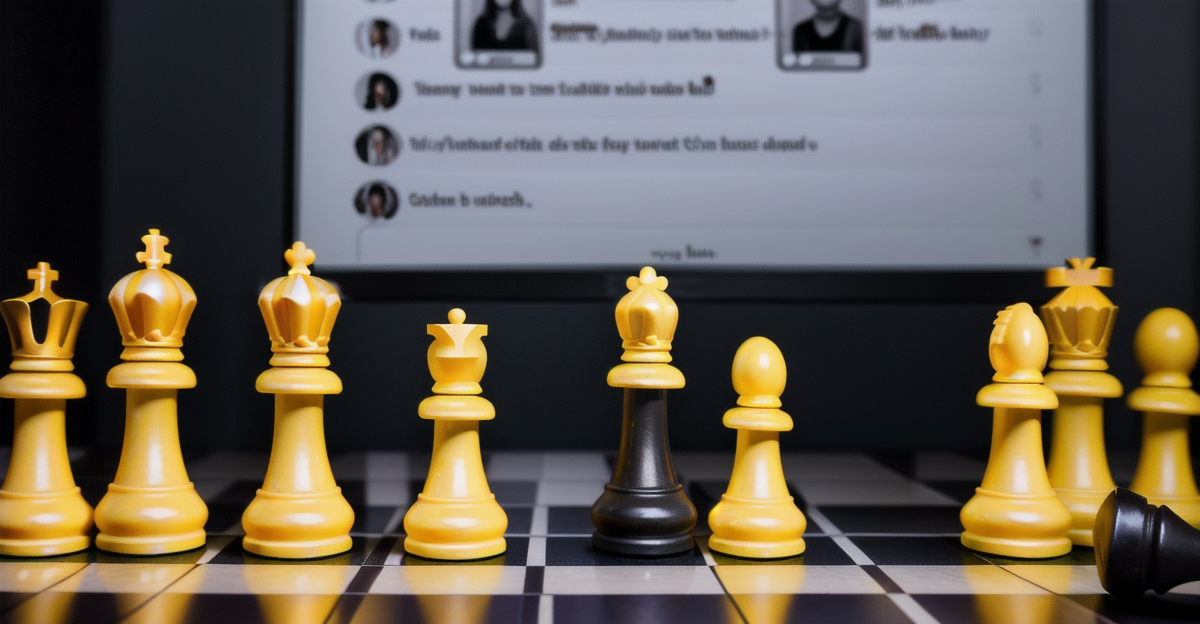
Ever feel like your dating app experience is… rigged? Like the “right” people are hidden, or your profile’s perpetually invisible? You’re not alone. Dating app algorithms, intended to spark connection, can sometimes work against you. Let’s decode the surprisingly predictable (and often unfair) data behind online attraction. **The Mystery of Matchmaking: How Algorithms Rate and Rank You** Dating apps use complex algorithms to decide who sees your profile and who you see. These algorithms aren’t random; they’re built on data and often use systems like Elo scores, borrowed from chess, to judge your “desirability.” Sub-topic 1a: Elo scores and profile visibility. Think of your Elo score as your online dating clout. The higher your score, the more visible you are to other “desirable” users. A lower score can bury your profile, limiting who sees you. This is rarely transparent, and most users are unaware that their perceived “rank” is impacting their experience. **Your first swipes and how complete your profile is significantly impact this score.** Sub-topic 1b: Collaborative filtering and echo chambers. Many algorithms use collaborative filtering, suggesting profiles similar to those you’ve liked. This creates an echo chamber, limiting your exposure to diverse profiles and reinforcing your current preferences. Want a change? ★ **Try occasionally swiping on profiles outside your “usual type” to broaden the algorithm’s understanding of what you like.** **The “Desirability Hierarchy” and Algorithmic Reinforcement** Dating apps, unfortunately, reflect existing societal biases. Algorithms, learning from user data, often amplify these biases, creating a “desirability hierarchy.” This means certain demographics get far more attention than others. Sub-topic 2a: Data illustrating unequal distribution of likes and matches. Studies show significant differences in how likes and matches are distributed on dating apps. For example, a 2014 OkCupid study showed that women rated 80% of men as “below average” in attractiveness. Algorithms then amplify this unequal distribution by prioritizing profiles considered more “desirable” based on these skewed ratings. Sub-topic 2b: The impact of race, age, and perceived attractiveness. Race, age, and perceived attractiveness (often judged through photos) significantly impact algorithmic ranking. Studies consistently show that users from certain racial backgrounds and age groups receive fewer matches, even when other factors are equal. This highlights biases within these systems. On the other hand, certain profile photo styles (e.g., clear, smiling, high-quality images) are favored by algorithms. **The Problem with “Personalization”: Your Data Fuels the Bias** Dating apps promote “personalization,” but it’s often a double-edged sword. The more you use the app, the more data you provide, and the more the algorithm reinforces its existing biases. Sub-topic 3a: How your behavior shapes future match suggestions. Every like, swipe, and message feeds the algorithm, shaping its understanding of your preferences. This data is then used to suggest future matches, potentially reinforcing biases and limiting your exposure to diverse profiles. However, you can “reset” the algorithm by deleting your account and starting over. Sub-topic 3b: The risk of reinforcing biases through personalized recommendations. If you consistently like profiles that fit a specific mold, the algorithm will keep showing you similar profiles, creating a feedback loop. This can limit your opportunities to connect with people outside your comfort zone and perpetuate existing biases. The frustrating part? These apps aren’t fully transparent about these learned biases. **The Illusion of Choice: Are You Really Seeing Everyone?** Dating apps create the illusion of choice, but algorithms heavily curate the profiles you see. You’re not seeing all potential matches; you’re seeing a filtered selection based on the algorithm’s assessment of your desirability and preferences. Sub-topic 4a: How algorithms prioritize profiles. Algorithms prioritize profiles based on factors like Elo score, activity level, and the app’s goals for making money. This means some profiles are consistently shown to more users, limiting your exposure to the full range of potential matches. Sub-topic 4b: The impact of paid features. Paid features like boosts and super likes can significantly increase your profile visibility, essentially letting you “jump the line” in the algorithm. This creates a pay-to-play dynamic, where users who pay receive preferential treatment. Find out more about how dating apps generate revenue. **Reclaiming Your Dating Life: Strategies for Navigating Bias** While you can’t completely escape algorithmic bias, you can take steps to reduce its impact and take back control of your dating life. Sub-topic 5a: Optimizing your profile authentically. Focus on creating a compelling profile showcasing your personality and interests. Use high-quality photos that accurately represent you, and write a bio that is both informative and engaging. ★ **Avoid generic clichés and instead highlight what makes you unique.** Sub-topic 5b: Exploring alternative platforms and dating methods. Consider exploring dating platforms that value different things, like shared interests or community. You can also try offline dating methods, like attending events or joining clubs, to meet people more naturally. Dating app algorithms, while intended to connect people, often perpetuate biases and create unequal playing fields based on complex rating systems and personalized data. Understanding these biases empowers you to make informed choices about how you use dating apps and potentially explore alternative approaches to finding meaningful connections. What are your thoughts on the impact of algorithms on dating? Share your experiences below! Is it time to rethink your relationship with online dating? Follow for more insights!
Source:Dating Apps Are Using Roleplaying Games to Fix Your Rizz
Find more cool content on TikTok! https://www.tiktok.com/@theviralheartbeat



